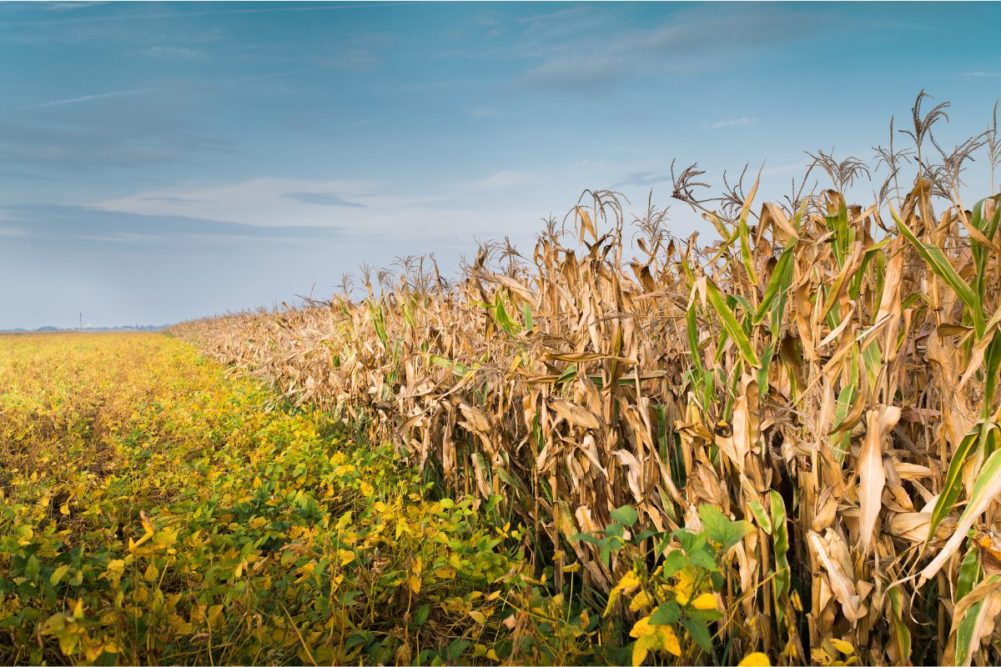KANSAS CITY, MISSOURI, US — Adverse weather has been taking a late-season swipe at crops in the United States, including spring wheat, corn and soybeans in the nation’s midsection where harvest is getting underway.
Extreme heat and drought were the center of attention for crops from Louisiana and Texas to North Dakota and the Canadian Prairies, the latter of which has had yield-cutting drought much of the growing season. The “dome” of heat that sent temperatures above 100 degrees Fahrenheit (37.8 degrees Celsius) last week was centered over the Corn Belt.
The winter wheat crop dodged the latest heat event with only Montana, Idaho and Washington with less than 90% harvested as of Aug. 20, according to the US Department of Agriculture (USDA).
The heat was catching the spring wheat crop during the heart of harvest, with 39% of the crop combined as of Aug. 20. The six-state good-to-excellent rating was 38%, down from 42% a week earlier and 64% a year ago. The lowest ratings were in Washington (25%), Montana (28%), South Dakota (32%) and North Dakota (39%).
The book still is open for corn and soybeans, but it is late enough in the season that damage from the heat wave would be mitigated, according to one agricultural meteorologist. Still, corn kernel sizes and grain quality may be reduced as the crop matures more rapidly in parts of Minnesota, Iowa, Illinois, Kansas and North Dakota that have the lowest subsoil moisture needed to carry the crop through to harvest, he said.
Soybeans in the same areas will be stressed by low subsoil moisture during the pod filling stage and may have smaller bean sizes, lower oil content and lower yields. As with last year, crops in the eastern Corn Belt were faring better than those in western areas, although the latter so far was better than a year ago. The corn crop in the 18 major states was rated 58% good-to-excellent as of Aug. 20, down from 59% a week earlier but above 55% at the same time last year. Crop development was near average for the date.
The soybean crop in the top 18 states was rated 59% good-to-excellent as of Aug. 20, unchanged from the prior week and slightly above 57% at the same time a year ago. Crop development was near the five-year average pace.
The heat was expected to break at the end of last week, but forecasts were scant for rain in late August and early September that could give crops a final drink of much-needed water before maturation.
Scouts on thePro Farmer Midwest crop tourAug. 21-24 got a firsthand look at corn and soybean crops from Nebraska to Ohio. Reports indicated good but not great crops in the western Corn Belt with definite signs of heat and drought stress on corn. In eastern areas, observations showed better crop prospects than in areas to the west.





